#iot in healthcare
Text
Benefits of IoT Applications In The Healthcare Industry
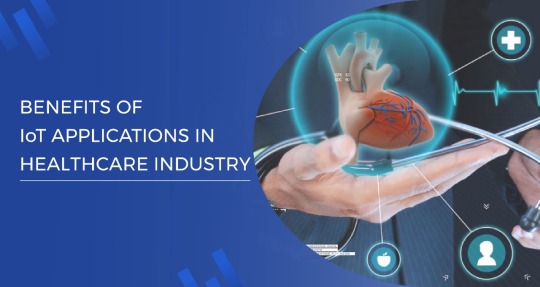
New technologies are quickly filling up the healthcare sector. The ability of hospitals, doctors, and service providers to provide high-quality healthcare services in order to enhance patient outcomes is constrained by escalating healthcare difficulties, such as the growth in chronic illnesses and the aging global population.
They have come to the doors of cutting-edge technologies like the Internet of Things (IoT), artificial intelligence, machine learning, and data analytics as a result of these issues. IoT is the one that has the most caught the eye of healthcare service providers.
What does IoT mean for Healthcare?
IoT solutions for healthcare are being implemented or are being researched by more than 60% of healthcare companies globally. In the upcoming years, a large rise in the number of individuals and healthcare professionals adopting IoT-connected devices for health monitoring is anticipated. Some of the issues that have arisen in healthcare throughout the years may be resolved by the Internet of Things. For example, low rates of drug compliance, a lack of instruments for treatment management, poor patient monitoring, and a professional skills gap.
Benefits of IoT Applications in the Healthcare Industry
Smartens Up Hospitals
The use of IoT in healthcare allows for continuous and precise patient health tracking. In addition to this, there are a number of other ways that IoT improves the performance of the healthcare sector. Asset management represents one of the components. Wheelchairs, oxygen concentrators, defibrillators, nebulizers, and other monitoring devices are all regularly tracked to know where they are in real time. These IoT sensors enable hospital administrators to track their real-time whereabouts in a matter of minutes.
Transparency of Insurance Claims
One of the upcoming significant things is likely to be the expanding healthcare regulations combined with IoT connection. Why? This is due to the fact that many people make up medical conditions in order to get the most out of their insurance money. It implies that the insurance company will suffer a loss. As a result, insurance firms may use the data collected through top-notch health monitoring devices for underwriting and claim procedures due to the clear validity of the IoT-driven data. Such methods would make it simple to identify fraudulent claims. The insurer will thereafter be able to locate unsuitable applicants for underwriting.
Maintains A Record Of Your Patients
These days, wearables as well as other smart sensing technology allow doctors or personal nurses to evaluate the health of their patients remotely. The IoT sensors built into this equipment let the doctors follow the patient’s medical diagnostic state efficiently. It is simple to organize the patient’s treatment program and to keep an eye out for those who need emergency medical attention. Many patients at a hospital are in need of various types of medical care.
IoT makes it easier to maintain an organized and hassle-free database of each patient’s prior medical history, present medical needs, and potential future medical support.
Supports Medical Research
Medical research takes many years to complete, and IoT may greatly speed up this process. It is as a result of the data on medical conditions that may be utilised for statistical analysis. As a result, IoT not only reduces research time but also associated costs, making it possible for larger and more effective medical research and therapies.
Wearables are now the most popular smart gadgets in use for healthcare. However, they are not the most helpful when it comes to research labs. Modern laboratories need sophisticated monitoring equipment that can keep an eye on anything from lab temperature to CO2 leakage. The appropriate authorities are informed right away if any irregularity is found.
Creating Healthier Cities
Almost over half of the world’s population lives in cities, which are remarkably diverse systems. Millions of people live happy lives, choosing modes of transportation, sitting in traffic, and bike riding through parks. The addition of weather to this already complicated mix of individual and group activity results in more intricate patterns of air quality that alter daily.
We require real-time information on all scales in order to comprehend the patterns of air quality throughout the cities and how they influence the urban population. Here, IoT systems deliver real-time data from various points around the cities, pointing towards smart city initiatives. The decision-makers for creating healthier cities will be better equipped with a higher resolution image of the air quality.
How Cost-Effectively Can IoT Healthcare Solutions Be Implemented?
IoT in healthcare ultimately aims to improve patient health, empower medical professionals, and reduce costs for everyone involved. You may create a low-cost IoT sensor network with a dependable technology partner.
Reduced expenditures, clearly defined roles and functionality for sensors, and sending and receiving data only when necessary are just a few of the foundations of cost efficiency that may be used to the creation of IoT apps for healthcare. In order to accomplish all of this, you must work with your technology partner to design an efficient IoT app development strategy and application architecture.
IoT In Your Health Sector?
In conclusion, we can say with certainty that IoT has fundamentally altered the healthcare sector. With the exception of the Internet of Things, among the most important industrial areas is healthcare. Additionally, the delivery of services and facilities in the healthcare industry has altered as a result of IoT app development.
Hire IoT developers, set up a project, and take a step towards creating the healthcare of the future if you want to take advantage of this change. There are several reputable IoT development businesses that have been offering a variety of IoT development services, but very few of them consistently meet or exceed customer expectations.
Versatile Mobitech has skilled IoT developers that are now working on several IoT-based healthcare software projects.
For a FREE consultation, Visit Versatile Mobitech
#mobile app development company hyderabad#mobile app developers in hyderabad#IoT in Healthcare#IoT Healthcare solutions
2 notes
·
View notes
Photo
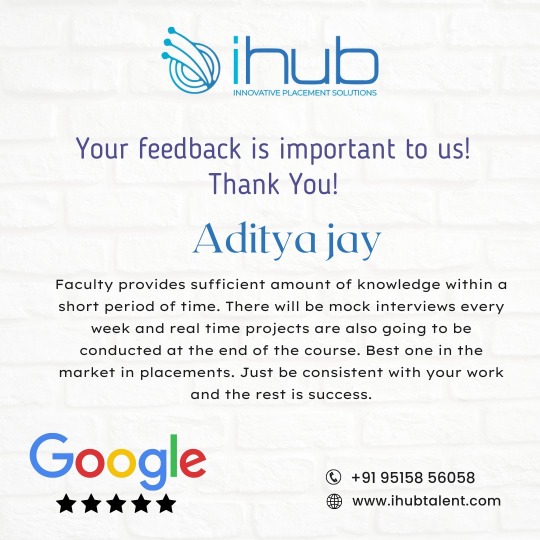
#Happystudent
Your feedback is important to us! Thank you!
Explore Our Job Oriented Intensive Program by iHub Talent (Transforming Dreams ! Redefining the Future!)
Reach out to us:
Contact no: +91 9515856058
Web: https://ihubtalent.com/
#ihub#ihubtalent#aws#cloud#cloudcomputing#azure#technology#amazonwebservices#amazon#coding#developer#bigdata#machinelearning#googlecloud#datascience#microsoft#software#awscloud#iot in healthcare#iot#javascript#awstraining#java#TransformingDreams
2 notes
·
View notes
Text
Unveiling the Transformative Benefits of IoT in Healthcare with Biot-Medical
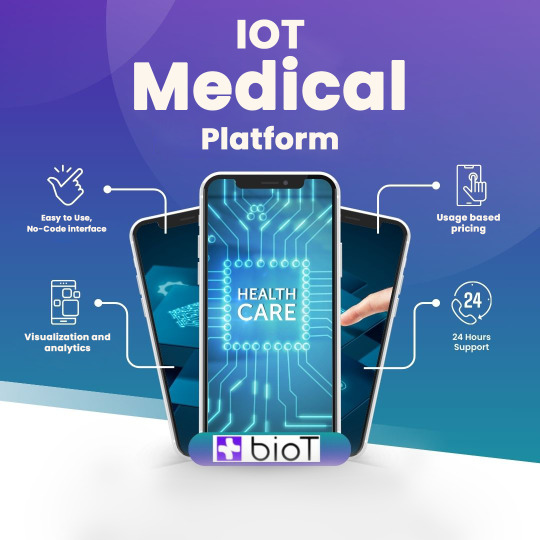
In the ever-evolving landscape of healthcare, the integration of IoT (Internet of Things) technology has emerged as a game-changer, offering a multitude of transformative benefits that revolutionize patient care, operational efficiency, and healthcare outcomes. As a leading platform for connecting medical devices to the cloud, Biot-Medical is at the forefront of leveraging IoT in healthcare to unlock new possibilities and drive positive changes. Let's delve into the myriad benefits of IoT in healthcare and how Biot-Medical is spearheading this digital transformation.
1. Remote Patient Monitoring
One of the standout benefits of IoT in healthcare is remote patient monitoring. IoT-enabled medical devices allow healthcare providers to monitor patients' vital signs, medication adherence, and overall health remotely and in real time. This continuous monitoring leads to early detection of health issues, timely interventions, and personalized care plans, ultimately improving patient outcomes.
2. Enhanced Operational Efficiency
IoT solutions streamline healthcare operations by automating processes such as inventory management, asset tracking, and equipment maintenance. This automation reduces manual errors, saves time for healthcare staff, and enhances overall operational efficiency, allowing organizations to focus more on delivering quality care to patients.
3. Data-driven Decision-making
IoT generates vast amounts of data, which, when analyzed using advanced analytics, provides valuable insights into patient health trends, treatment efficacy, and operational performance. These data-driven insights empower healthcare providers to make informed decisions, optimize treatment plans, and improve healthcare delivery.
4. Improved Patient Outcomes
By leveraging IoT for remote monitoring, personalized care, and predictive analytics, healthcare providers can achieve improved patient outcomes. IoT facilitates early disease detection, proactive interventions, and better management of chronic conditions, leading to healthier and more satisfied patients.
5. Telemedicine and Virtual Care
IoT plays a crucial role in enabling telemedicine and virtual care solutions. Through IoT-enabled devices and platforms, patients can access healthcare services remotely, receive medical consultations, and engage in virtual visits with healthcare providers. This expands access to care, especially for patients in rural or underserved areas, and improves overall healthcare accessibility.
Biot-Medical's Commitment to IoT in Healthcare
Biot-Medical is committed to harnessing the power of IoT in healthcare to drive positive changes and enhance patient care. Our platform seamlessly connects medical devices to the cloud, enabling real-time data access, advanced analytics, and interoperability across healthcare systems. Through our innovative solutions, we empower healthcare organizations to leverage IoT technology effectively and achieve better healthcare outcomes.
Conclusion: Embracing the Future of Healthcare with IoT
In conclusion, the benefits of IoT in healthcare are profound and far-reaching. From remote patient monitoring to enhanced operational efficiency and improved patient outcomes, IoT has the potential to transform healthcare delivery. Biot-Medical continues to be a catalyst for this transformation, providing cutting-edge IoT solutions that empower healthcare providers, improve patient experiences, and shape the future of healthcare. Embrace the power of IoT with Biot-Medical and unlock new possibilities for a healthier tomorrow.
0 notes
Text
Let’s explore the lucrative beneficial of AI in healthcare like remote monitoring and data insights to better treat patients in less time. Let's get started!!
#Ai in healthcare industry#ai and wearables#ai wearables in healthcare#Artificial intelligence in healthcare#iot in healthcare
0 notes
Text
Exploring the Future of IoT | Internet of Things
Internet of Things (IoT) has already transformed the way we perceive and interact with technology connecting everyday objects to the digital world. As we navigate through a rapidly evolving technological landscape it becomes crucial to delve deeper into the future of IoT and the endless possibilities it holds. Let’s explore the exciting advancements and emerging trends that will shape the future…
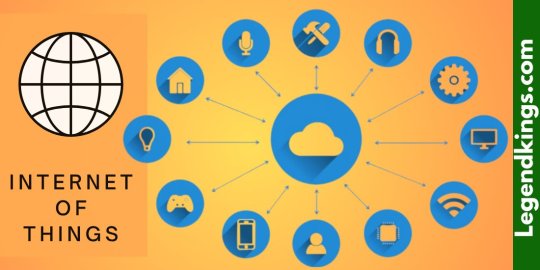
View On WordPress
#connected devices#Data Analytics#Emerging IoT Technologies#Future Technology#Industrial IoT#IoT Applications#IoT Automation#IoT Connectivity#IoT Data Privacy#IoT Ecosystem#IoT in Agriculture#IoT in Healthcare#IoT Industry Insights#IoT Infrastructure#IoT Innovations#IoT Security#IoT Sensors#IoT Sustainability#IoT Trends#Smart Homes
0 notes
Text
Ways IoT Can Improve Your Healthcare Business
Know how IoT can transform and simplify the activities like patient care, cost, reduction in error, etc in the healthcare industry and why to adopt IoT in healthcare.
0 notes
Text
IoT in Healthcare: A Comprehensive Guide
IoT in Healthcare: A Comprehensive Guide
The Internet of Things (IoT) has revolutionized numerous industries, and one of the most impactful areas of its application is healthcare. IoT has brought about a paradigm shift in the way healthcare services are delivered, monitored, and managed. From improving patient care and outcomes to enhancing operational efficiency and reducing costs, IoT is reshaping the healthcare landscape. In this comprehensive guide, we will delve into the various facets of IoT in healthcare, exploring its benefits, challenges, current applications, and future prospects.
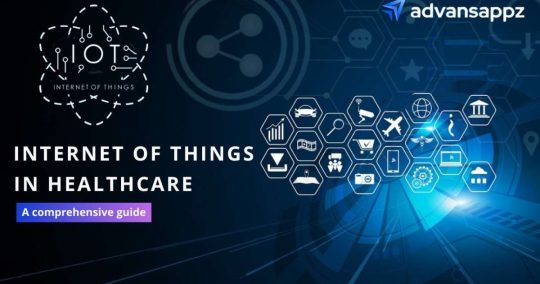
1 note
·
View note
Link
0 notes
Link
Evolution of complementing technologies, such as Big Data and Artificial Intelligence drives the demand for an IoT (Internet of Things) in the healthcare...
0 notes
Text
Transforming Patient Care and Experience: The Power of IoT and RIOT MED PLUS in Healthcare
The healthcare industry is experiencing a transformative wave, thanks to innovative technologies such as the Internet of Things (IoT). IoT has the potential to revolutionize patient care and improve overall experiences by seamlessly connecting medical devices, systems, and patients. One such advancement in the realm of IoT is RIOT MED PLUS, an integrated solution empowering doctors to remotely diagnose various health stats of patients in real time while providing teleconsulting. This article explores how healthcare providers can leverage IoT, along with RIOT MED PLUS, to enhance patient care, improve outcomes, and deliver a more personalized and efficient healthcare experience.
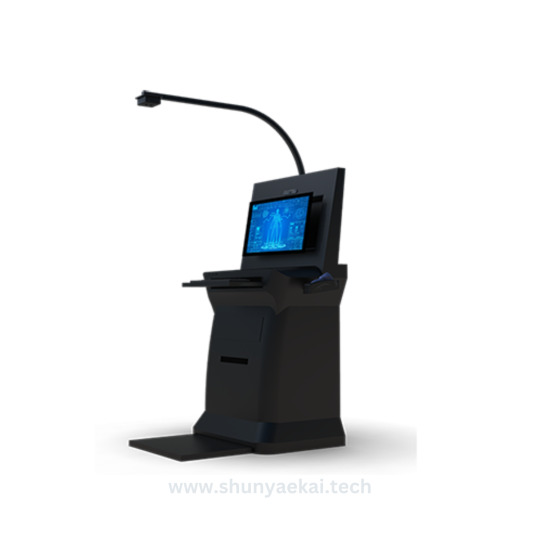
Remote Patient Monitoring and Teleconsulting:
RIOT MED PLUS, combined with IoT, enables healthcare providers to remotely monitor patients and provide teleconsultations. By integrating wearable devices and IoT-enabled sensors, patients can transmit real-time health data to doctors. This data encompasses vital signs, such as heart rate, blood pressure, and oxygen levels, as well as other health parameters. Doctors can access accurate and precise data, allowing them to diagnose patients remotely and prescribe the right consulting and medication. Teleconsulting eliminates the need for physical appointments, offering convenience to patients and minimizing healthcare costs.
2. Enhanced Diagnosis Insights:
RIOT MED PLUS empowers patients to easily share their diagnosis history with doctors, providing better insight into their prevailing health conditions. Through secure data sharing, doctors gain access to comprehensive medical records, test results, and treatment history. This holistic view of the patient's health allows doctors to make accurate diagnoses, assess trends over time, and develop personalized care plans. The combination of IoT-generated data and comprehensive medical records enables doctors to provide precise and informed medical recommendations.
3. Proactive and Preventive Care:
With RIOT MED PLUS and IoT, healthcare providers can leverage real-time data and advanced analytics to deliver proactive and preventive care. Continuous monitoring of health stats and the ability to identify patterns or anomalies enables doctors to intervene early and prevent potential health complications. By analyzing trends in vital signs, sleep patterns, physical activity, and other health parameters, doctors can identify high-risk individuals and implement targeted interventions. RIOT MED PLUS facilitates the seamless exchange of patient data, ensuring that doctors have access to up-to-date information for timely and proactive care.
4. Patient Empowerment and Engagement:
RIOT MED PLUS, integrated with IoT, fosters patient empowerment and engagement in their healthcare journey. Through patient portals and mobile applications, patients can access their health records, track progress, and communicate with doctors conveniently. Patients can also receive personalized health information, reminders, and educational resources. The combination of IoT-generated data and patient engagement tools empowers individuals to actively participate in managing their health, leading to improved treatment adherence and better health outcomes.
5. Seamless Care Coordination and Transitions:
The integration of RIOT MED PLUS and IoT facilitates seamless care coordination and transitions between healthcare settings. Connected healthcare systems and interoperable devices ensure the efficient exchange of patient data and health records. This enables doctors to access vital information and provide continuous care regardless of the care setting. During care transitions, doctors have comprehensive insights into the patient's health history, enabling them to make informed decisions and reduce the likelihood of medical errors.
Conclusion:
The integration of RIOT MED PLUS with IoT holds immense potential for enhancing patient care and experience in healthcare. By leveraging real-time data, remote patient monitoring, teleconsulting, and advanced analytics, healthcare providers can deliver personalized, proactive, and patient-centered care. RIOT MED PLUS empowers doctors with accurate and precise data, allowing for remote diagnoses and appropriate medical recommendations. With improved diagnosis insights, proactive care, patient engagement, and seamless care coordination, the combination of IoT and RIOT MED PLUS is transforming the healthcare landscape, ultimately leading to better health outcomes and an enhanced patient experience.
1 note
·
View note
Text
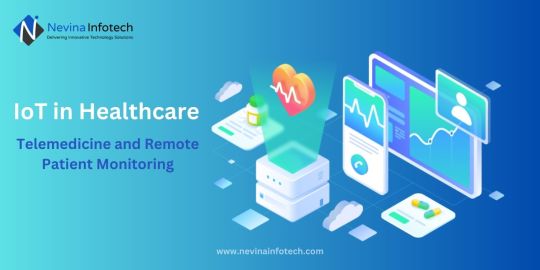
IoT In Healthcare
The benefits of IoT in healthcare through telemedicine and remote patient monitoring. Stay connected and provide effective care with IoT technology.
0 notes
Text
The Impact of Internet of Things on Healthcare
With the development of IoT-enabled healthcare solutions in recent years, the healthcare sector has undergone a digital transformation. A network of linked devices that gather and exchange data online is known as the Internet of Things (IoT).
IoT has made it possible to create medical equipment and health monitoring tools that can keep tabs on patients remotely and send information to medical…
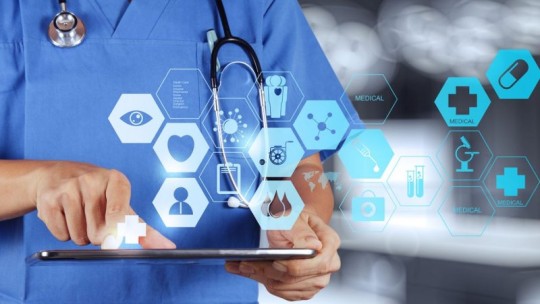
View On WordPress
#Health monitoring devices#IoT in Healthcare#IoT in healthcare devices#Medical devices#patient records#Remote patient monitoring
0 notes
Text
Internet Of Things

Turn your house and office into a smart world of possibilities, with everything connected and under your control over your smartphone with IoT app development.
Appikr introducing a complete solution for your smart home and office at discounted prices.
#appikrlabs#mobile app development#iot#iotsolutions#iot in healthcare#technology news#internet of things
0 notes
Text
What Are The Benefits And Challenges of IoT in Healthcare?

If you want to know about the advantages and troubles of IoT for healthcare then you should read this blog.
0 notes
Text
IoT in Healthcare: With Benefits and Challenges
Discover how IoT in healthcare is transforming the industry, improving patient care and saving lives.
0 notes
Text
Internet of Things (IoT) in healthcare: benefits, use cases and evolutions
In recent years, the healthcare sector has made a significant shift to digitalization. The way doctors and hospitals provide care for their patients is changing as a result of digital technologies like IoT devices and monitors. This is a significant development in streamlining healthcare, reducing expenses, and enhancing access to vital medical information.
From $41 billion in 2017 to $158 billion in 2022, the global market has grown dramatically and is now known as the Internet of Medical Things (IoMT) which will flourish as the years come by. A constant stream of real-time health information and vital signs, including heart rate, blood pressure, and glucose monitoring, is provided through IoT devices. Moreover, various IoMT medical devices are launching for everyone such as smart beds, thermometers, EKGs, ultrasounds, and much more.
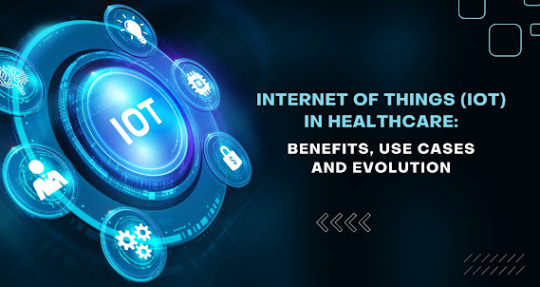
Benefits of IoT in healthcare
IoT adoption has undeniable advantages for medical professionals and the patients they care for. Among the most typical advantages:
Better Patient Experience – Healthcare facilities are improved when patients are linked to their doctors and families. Remotely tracking devices for vital signs and symptoms make physical spaces smarter, increasing operational and clinical efficiency that results in a more personalized experience.
Precise diagnosis – Personal monitoring devices provide real-time information (such as blood pressure and glucose monitors). They offer information to evaluate past treatments, diagnose symptoms, minimize errors, and enhance ongoing disease management.
Lower Costs – Remote IoT monitoring lowers hospital and physician office operational costs. Additionally, accessing and analyzing electronic healthcare records is less expensive than paper ones.
Common uses of IoT in healthcare
IoMT use cases are becoming more prevalent in the healthcare industry. Among the most well-known and significant IoT applications in healthcare:
Management of Diabetes
The number of adults in the U.S. who have diabetes or prediabetes has risen to over 100 million, making blood sugar level tracking an essential and thriving industry. In the past, diabetes patients had to prick their fingernails to check their blood glucose levels. Unfortunately, this cumbersome approach causes some people to examine less frequently than they ought to, which could raise the risk of long-term issues. Patients were more at risk for dangerous swings in their blood sugar levels since there were no real-time data available.
The rise in IoT simplifies glucose monitoring devices and their use in managing diabetes. Patients can wear these wrist sensors to monitor their blood sugar levels and integrate the information into a reader and smartphone tracking software. The data is wirelessly transferred to the main system that gives you instant updates when you take a glucose reading.
Virtual Hospitals
The smart IoT technology created an innovative new environment called "hospitals without walls". When you wear personal wearables, it gives the patient and the physicians to provide long-term care remotely right in the comfort of patients’ homes. Patients gain from the ease and speed of care, not to mention freeing up hospital beds for patients who require in-person intensive care. In Sydney, Australia, there is a virtual hospital launched in 2020, right as the epidemic was starting to spread. The hospital was rebuilt to offer remote care for patients displaying COVID symptoms by using armpit patches to check body temperature and pulse oximeters (placed on a finger) to detect heart rates and oxygen saturation levels. The data was immediately transmitted to virtual hospital staff using a smartphone app.
Smart Labs
The lab equipment used in today's smart labs can track and send data pertaining on science and health. Researchers and medical practitioners from several disciplines can rapidly and accurately collect and exchange lab results among themselves to accelerate analysis. Alerts can be put up to help prevent equipment breakdowns and the loss of important product information and materials, such as missing medical samples. Researchers can collaborate more effectively in smart labs, and they can speed up the release of critical medical goods for the general population.
d. COVID Impact on IoT in healthcare
Since the epidemic started, development in the healthcare industry has dramatically increased. The usage of multiple wireless monitoring IoT devices and the increased use of video chat by healthcare professionals allows patients to receive real-time care without having to see a physician in person. Insurance payers have also backed the change, with some of them issuing exemptions that permit payment equality for medical services provided in-person or virtual. Virtual treatment seems to be the latest trend as the world recovers from the pandemic, and even ordinary follow-up and feedback may be completely avoided.
Making a Difference with IoT in Healthcare
One of the sectors using IoT devices for the benefit of people everywhere may be the healthcare sector. IoT is having a major impact on everything from constant healthcare monitoring to virtual hospitals and labs, and anyone can get a start in the exciting subject of IoT with the correct training and preparation.
How do we help?
We at Kat tech Systems are the top software development company in Chicago. We provide you with healthcare IT solutions for healthcare companies who are looking forward to creating an intelligent system for common people.
Our IT Solutions for the healthcare industry include creating smart web and mobile apps that connect with your patients’ medical devices and deliver accurate results. We provide customized solutions for our clients and do not believe in one-size-fits-all. This is what sets us apart from the rest.
Want to know more? Feel free to call us at 001-630 233 8643.
#best IoT development companies in Illinois#best IT consulting firms in Chicago#IoT in healthcare#IT Solutions for the healthcare industry#top software development company in Chicago
0 notes